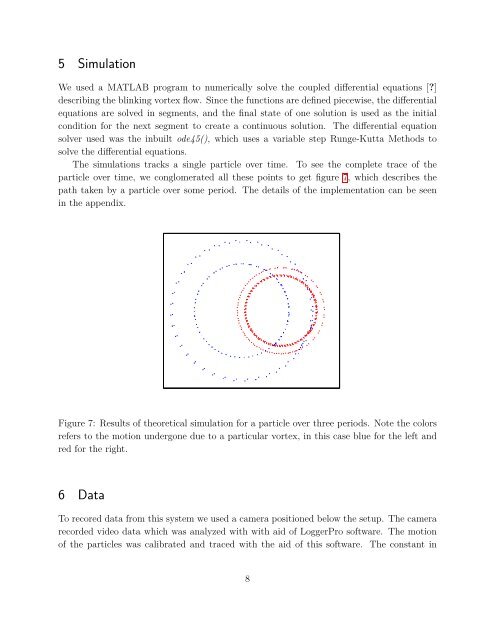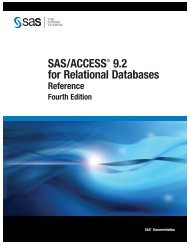Project paper - The Department of Physics and Astronomy
Project paper - The Department of Physics and Astronomy
Project paper - The Department of Physics and Astronomy
Create successful ePaper yourself
Turn your PDF publications into a flip-book with our unique Google optimized e-Paper software.
5 SimulationWe used a MATLAB program to numerically solve the coupled differential equations [?]describing the blinking vortex flow. Since the functions are defined piecewise, the differentialequations are solved in segments, <strong>and</strong> the final state <strong>of</strong> one solution is used as the initialcondition for the next segment to create a continuous solution. <strong>The</strong> differential equationsolver used was the inbuilt ode45(), which uses a variable step Runge-Kutta Methods tosolve the differential equations.<strong>The</strong> simulations tracks a single particle over time. To see the complete trace <strong>of</strong> theparticle over time, we conglomerated all these points to get figure 7, which describes thepath taken by a particle over some period. <strong>The</strong> details <strong>of</strong> the implementation can be seenin the appendix.Figure 7: Results <strong>of</strong> theoretical simulation for a particle over three periods. Note the colorsrefers to the motion undergone due to a particular vortex, in this case blue for the left <strong>and</strong>red for the right.6 DataTo recored data from this system we used a camera positioned below the setup. <strong>The</strong> camerarecorded video data which was analyzed with with aid <strong>of</strong> LoggerPro s<strong>of</strong>tware. <strong>The</strong> motion<strong>of</strong> the particles was calibrated <strong>and</strong> traced with the aid <strong>of</strong> this s<strong>of</strong>tware. <strong>The</strong> constant in8
















